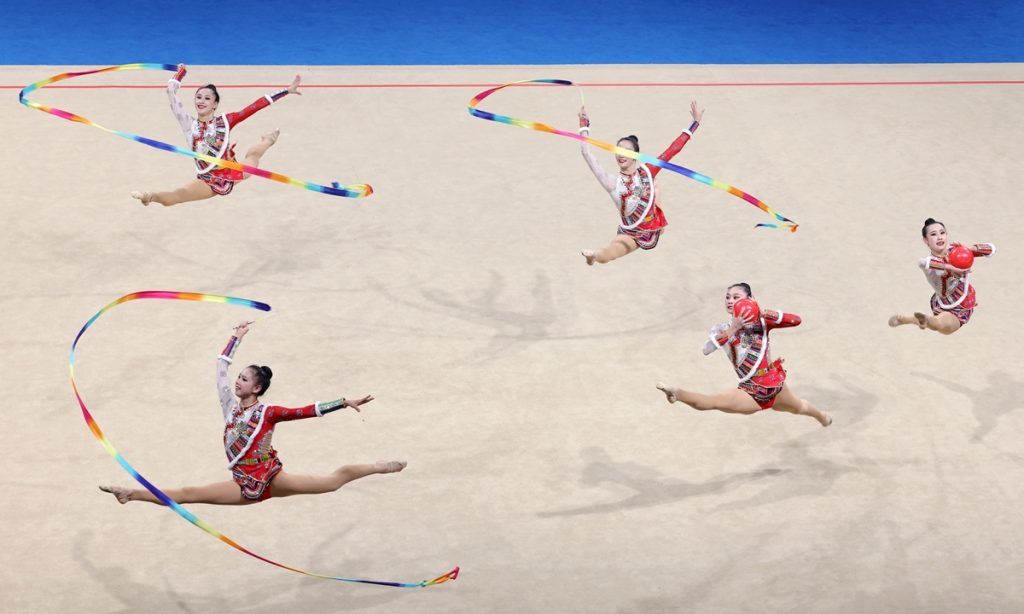CCDI issues communiqué, vows to eliminate systemic corruption risks and consolidate overwhelming victory

The 20th Communist Party of China (CPC) Central Commission for Discipline Inspection (CCDI) on Wednesday adopted a communiqué at its third plenary session, pledging to continuously deepen the fight against corruption, seriously investigate and punish corruption in the financial sector, state-owned enterprises, universities, sports, tobacco, medicine, grain purchase and marketing, and statistics, as well as resolutely eliminate systemic corruption risks and hidden dangers so as to comprehensively consolidate a hard-won and overwhelming victory.
The third plenary session was held in Beijing from Monday to Wednesday with 238 attendees and 132 members of the CCDI.
According to the communiqué, as 2024 marks the 75th anniversary of the founding of the People's Republic of China and is a key year for achieving the goals and tasks of the 14th Five-Year Plan (2021-25), the country will continue to do a good job in discipline inspection and supervision this year.
The communiqué stressed that this year will focus on eradicating the conditions that give rise to corruption to deepen the fight against this behavior. Ensuring that officials "do not dare, are not able, and do not want to be corrupt" is the fundamental guideline for battling corruption.
The communiqué said the country will continue to focus on key issues, key areas, key targets, new types of corruption and hidden corruption, and severely punish corruption linked with government and business as the top priority in the battle.
China will deepen efforts to crack down on corruption in finance, state-owned enterprises, energy, tobacco, medicine, infrastructure projects, and bidding, also with focus on cross-border corruption.
China will strengthen joint investigation into bribery as well as officials taking bribes, and improve the joint punishment mechanism for key bribe givers. Also, it will continue to promote national anti-corruption legislation, according to the communiqué.
Li Qiang, Zhao Leji, Wang Huning, Cai Qi and Ding Xuexiang, all members of the Standing Committee of the Political Bureau of the CPC Central Committee, attended the meeting.
Li Xi, a member of the Standing Committee of the Political Bureau of the CPC Central Committee and secretary of the CCDI, presided over the meeting. The session reviewed the work of disciplinary inspection and supervision in 2023, deployed tasks for 2024, and approved the work report on promoting the high-quality development of disciplinary inspection and supervision in the new journey presented by Li.
Xi Jinping, general secretary of the CPC Central Committee, Chinese president and chairman of the Central Military Commission, emphasized at the session on Monday that after 10 years of unremitting anti-graft efforts in the new era, an overwhelming victory has been achieved and fully consolidated, according to the Xinhua News Agency on Tuesday night.
However, the situation remains severe and complex. "We must have a clear understanding of the latest developments and trends in the fight against corruption, and of the soil and conditions that give rise to corruption. The Party must continuously combat corruption with tenacity, perseverance and precision, and resolutely win the tough and protracted battle against corruption," Xi said.
Before and during the three-day third plenary session, China's state broadcaster China Central Television (CCTV) aired the four-episode anti-graft blockbuster Continued Efforts, Deepening Progress for four consecutive days. The documentary, which came to an end on Tuesday, features 12 typical corruption cases, with implicated officials confessing their crimes on camera, including those related to the high-profile anti-corruption efforts covering Chinese soccer. Leaving audiences in shock, the documentary indicates that China's anti-corruption efforts in 2024 will be more potent and thorough, said experts.
Also, judging from the latest communiqué, Chinese experts say that in the new year China will step up its efforts in combating corruption in a deeper dimension, particularly in resource-intensive industries such as the financial and health sectors.
Tang Renwu, dean of the School of Governance of Beijing Normal University, told the Global Times on Wednesday that an unprecedented achievement in anti-corruption was made in 2023 as the largest number of corrupt officials were arrested since the 18th CPC National Congress in 2012.
In the first nine months of 2023, Chinese discipline inspection and supervision agencies filed around 470,000 cases, with 12,000 individuals involved in bribery cases. A total of 45 senior officials were investigated in 2023, the highest number since 2012.
The crackdowns on corruption will further intensify, which can serve as a crucial deterrence to corrupt officials, Tang said, noting the comprehensive anti-graft drive is welcomed and supported by the people.
Although the country has gained a decisive victory in the fight against corruption, there is still a long way to go and the next step should be to improve and establish a system in which officials won't desire to commit corruption, which will be the major task for 2024, Tang said.








